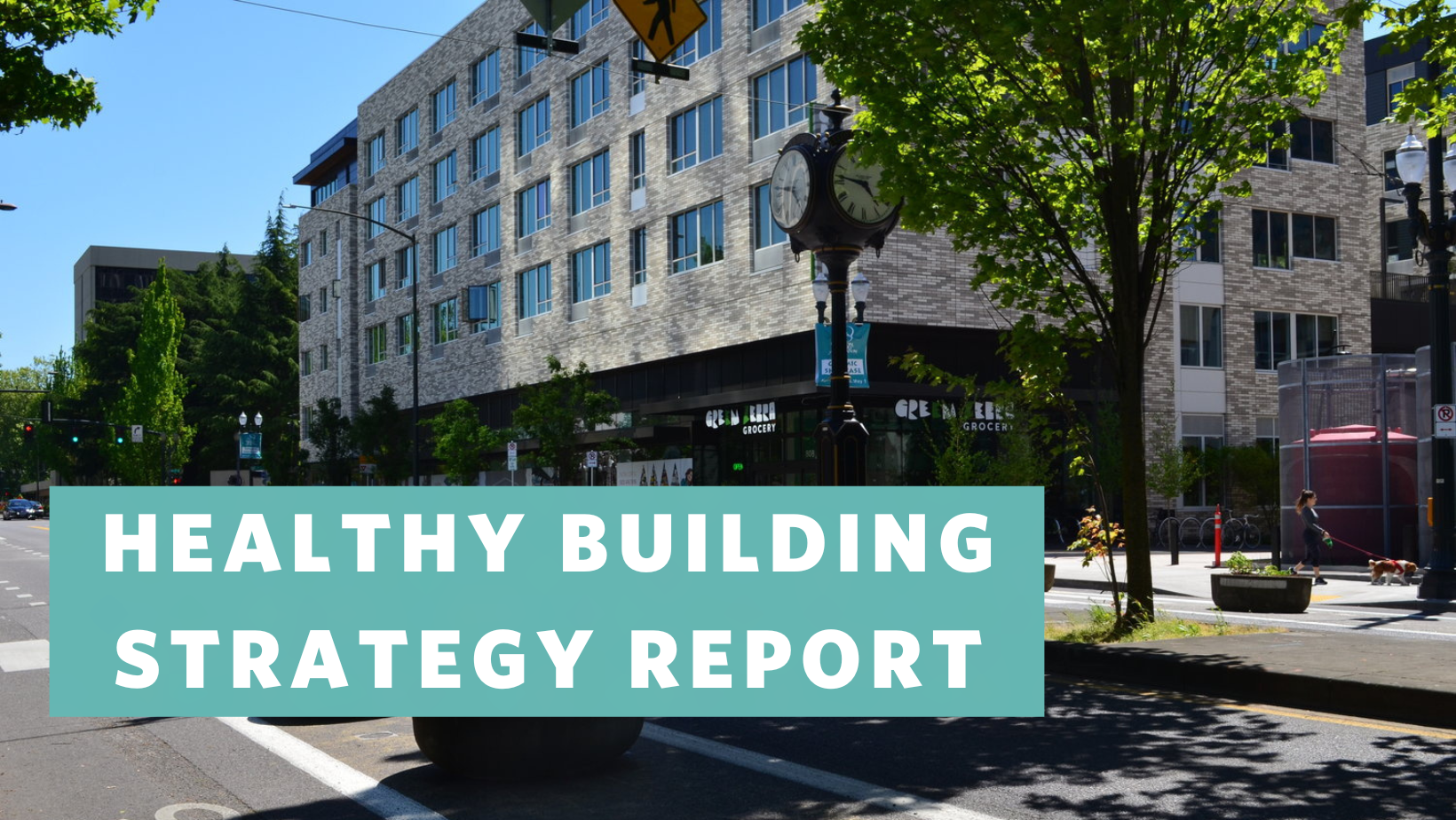Healthy Buildings Strategies

In the Lloyd neighborhood, like many other communities, issues of indoor and outdoor air quality are at top of mind. From the threat of current and future pandemics to hazardous air quality caused by wildfires or regional pollution, there is a need to create healthier buildings.
What is a Healthy Building?
Healthy Buildings are buildings that prioritize the well-being of its occupants – physically and socially. The immediate goal is to ensure the quality of indoor environments will not contribute to negative health outcomes for the occupants.
Healthier Buildings have been proven to have a number of positive outcomes.
When compared to industry standards, sustainable buildings were shown to have more engaged workers, happier and healthier occupants, and higher productivity. In addition, green-certified buildings show savings of between 30-97% in water, waste, and energy. At the same time, operating costs can be reduced by 8-9% while increasing value by 7.5%.
Healthy Building Strategies Report
In partnership with RWDI, a firm dedicated to improving the health, resilience, and well-being of communities, Lloyd EcoDistrict has prepared the Healthy Buildings Strategy report to improve indoor air quality and ensure your building is safe for your building occupants. You can read the report here. While oriented towards the uncertainties of returning to the office during the COVID-19 pandemic, many of the principles remain important for future resilience – particularly when thinking about the increased frequency of poor or hazardous outdoor air quality days caused by wildfire smoke.
Create a Healthy Building and realize positive benefits by following these steps:
- Assess your building’s current situation by measuring air quality, review air handling systems, and revisit current practices.
- Develop plans and goals to improve deficiencies by reviewing the baseline facilities report with owners and leadership. Owner buy-in is crucial to initiate change.
- Implement policies and programs to improve building health based on stakeholder conversations. It is crucial to set up the internal teams for success, including by creating detailed inventories.
- Once implemented, continually measure and monitor project performance to understand how things are working and adjust if needed.
- When ready, look into certification to demonstrate your progress and your accomplishments. Getting certified can help prove to stakeholders that your building is healthier than ever.
You can dive deeper into these steps in the full Healthy Buildings Strategy report here.